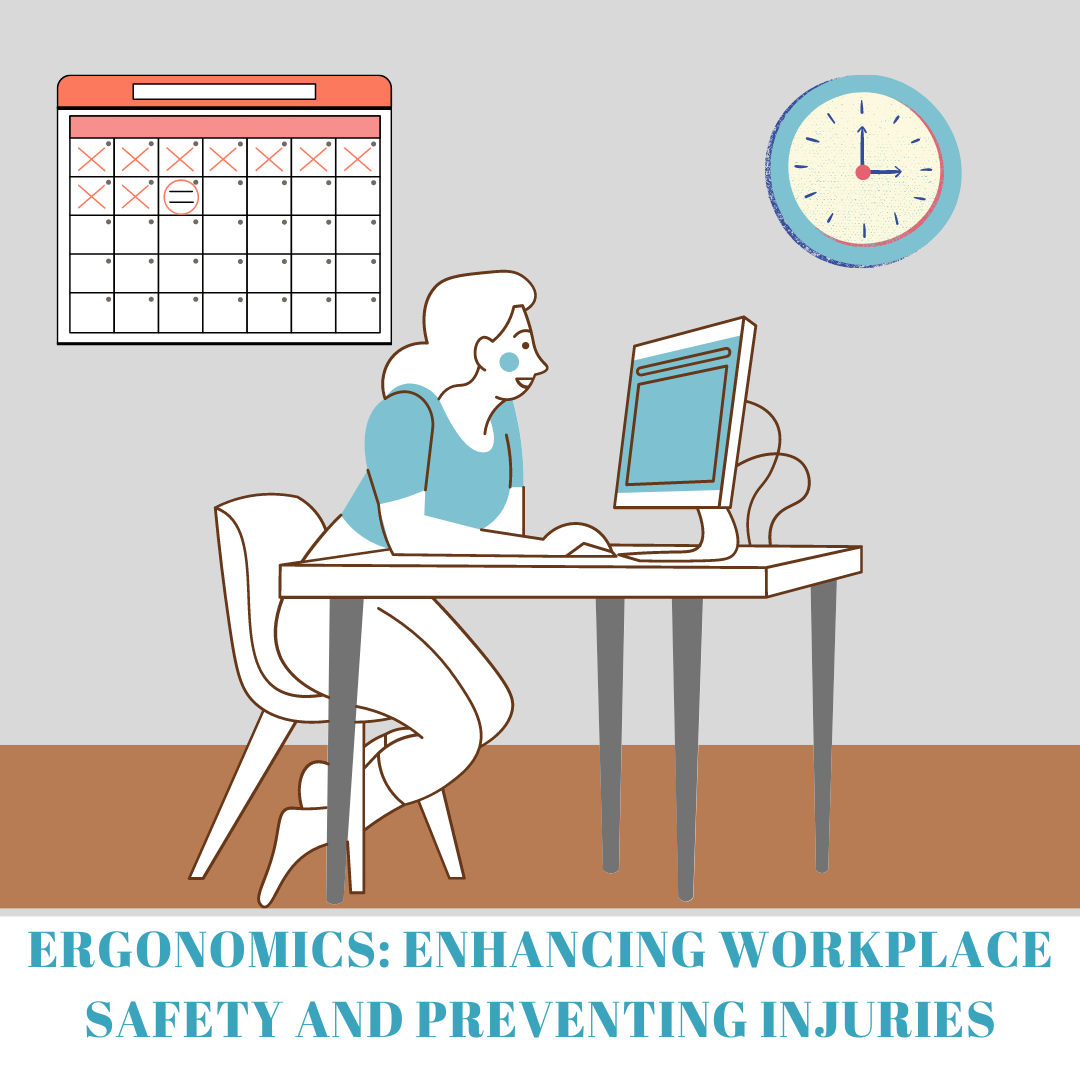
Introduction
In today’s work environments, ensuring employee safety and well-being is of paramount importance. One crucial aspect of achieving this is through the implementation of ergonomic practices. By prioritizing ergonomics in the workplace, organizations can create a safer and healthier environment that minimizes the risk of injuries and promotes employee well-being. In this blog post, we will delve into the world of ergonomics and explore its significance in preventing injuries and enhancing workplace safety. Let’s uncover the fundamental principles and practical applications of ergonomics that can transform your workplace.
Understanding Ergonomics
To lay the foundation, let’s define ergonomics. Ergonomics is the science of designing and arranging workspaces, tools, equipment, and tasks to fit the capabilities and limitations of the individuals performing the work. It aims to optimize efficiency, productivity, comfort, and safety in the workplace. By considering the physical, cognitive, and psychosocial aspects of work, ergonomics seeks to minimize the risk of injuries, musculoskeletal disorders, and other health issues associated with work activities.
The Importance of Ergonomics in Workplace Safety
Ergonomics plays a vital role in promoting workplace safety and preventing injuries. Here are some key reasons why ergonomics is important:
Injury Prevention
Ergonomic design helps reduce the risk of work-related injuries and musculoskeletal disorders. By adapting workstations and tasks to the physical requirements and limitations of employees, ergonomic initiatives minimize repetitive strain injuries, back pain, eye strain, and other common workplace ailments.
Improved Productivity
When employees work in ergonomically optimized environments, they can perform tasks more comfortably and efficiently. By reducing physical discomfort and fatigue, ergonomics contributes to increased productivity, as employees are less likely to experience distractions or need frequent breaks.
Enhanced Well-being
Ergonomics promotes employee well-being and satisfaction by prioritizing their health and comfort. When employees feel supported and comfortable in their work environment, morale improves, leading to higher job satisfaction, reduced stress levels, and improved mental health.
Cost Reduction
Investing in ergonomic initiatives can yield long-term cost savings for organizations. Companies can avoid medical expenses, rehabilitation costs, and potential legal liabilities by preventing workplace injuries and associated workers’ compensation claims. Moreover, increased productivity resulting from ergonomic interventions can positively impact the bottom line.
Practical Applications of Ergonomics in the Workplace
To implement ergonomics effectively, organizations can undertake various initiatives. Here are some practical applications of ergonomics in the workplace:
Workstation Ergonomics
Provide adjustable workstations that allow employees to personalize their setup based on their height, posture, and task requirements. This includes adjustable chairs, desks, and computer monitor positions.
Ergonomic Tools and Equipment
Equip employees with ergonomic tools and equipment that minimize strain and promote proper body mechanics. This includes ergonomically designed keyboards, mice, and lifting aids.
Task Design and Rotation
Optimize tasks to reduce repetitive motions and prolonged static postures. Encourage task rotation to minimize overuse of specific muscles or joints and provide variety in job tasks.
Training and Education
Provide comprehensive ergonomic training programs to raise awareness among employees about proper posture, lifting techniques, and the importance of taking regular breaks. This empowers employees to actively participate in creating a safer and healthier work environment.
Management Support and Employee Involvement
Foster a culture that values and supports ergonomics. Involve employees in identifying and addressing ergonomic concerns, and provide resources and support for implementing ergonomic improvements.
Ensuring Successful Ergonomic Implementation
Implementing ergonomics requires a systematic and holistic approach. Here are key factors for successful ergonomic implementation:
Management Commitment
Strong leadership support and commitment are essential for successful ergonomics implementation. Management should prioritize and allocate necessary resources for ergonomic initiatives.
Ergonomics Assessment
Conduct thorough ergonomic assessments to identify potential hazards and areas for improvement. This can involve analyzing workstations, tasks, equipment, and employee feedback.
Continuous Evaluation and Improvement
Regularly assess the effectiveness of ergonomic interventions and make necessary adjustments based on feedback and evolving needs. Maintain open communication channels with employees to address any ongoing ergonomic concerns.
Collaboration and Communication
Foster a collaborative environment where employees and management work together to identify ergonomic issues and develop solutions. Regular communication about ergonomics and its benefits helps to ensure ongoing engagement.
Ergonomics consultants
In some cases, organisations may not have internal capacity to implement an Ergonomics programme. Ergonomics consultants are professionals specialized in optimizing the design and arrangement of workplaces to enhance overall efficiency, comfort, and safety for employees. Their primary focus is on creating environments that promote productivity while minimizing the risk of work-related injuries and musculoskeletal disorders. These consultants possess a deep understanding of human anatomy and behaviour, enabling them to assess various workplace factors such as seating, desk height, lighting, and equipment placement.
By conducting thorough assessments and ergonomic evaluations, they offer valuable recommendations and implement tailored solutions to improve the overall well-being of workers. Whether it’s in offices, manufacturing facilities, or other work settings, ergonomics consultants play a vital role in creating conducive workspaces that positively impact both employees’ health and organizational performance.
Conclusion
Prioritization of ergonomics in the workplace is essential. Organizations can create safer, healthier, and more productive environments. The implementation of ergonomic principles and initiatives not only reduces the risk of injuries and musculoskeletal disorders but also enhances employee well-being and satisfaction. By investing in ergonomic design, organizations demonstrate their commitment to workplace safety and the overall health and success of their workforce. Let’s embrace the power of ergonomics and create work environments that prioritize employee safety, well-being, and productivity.
,





